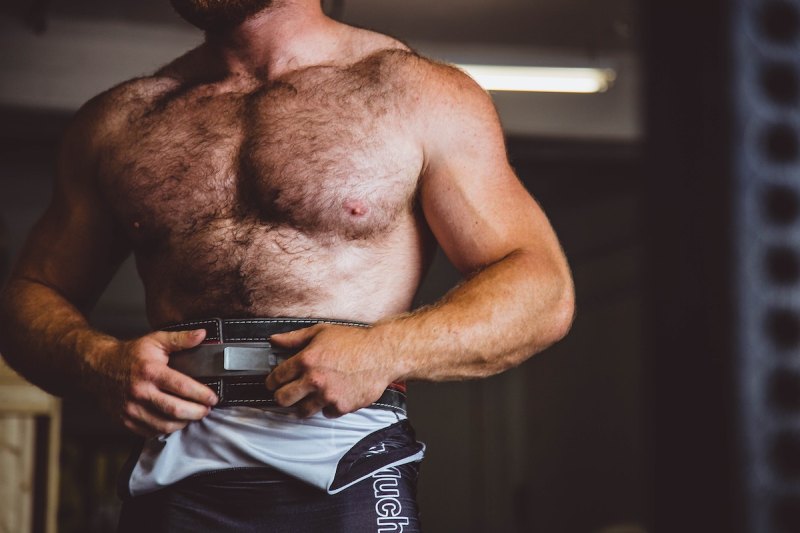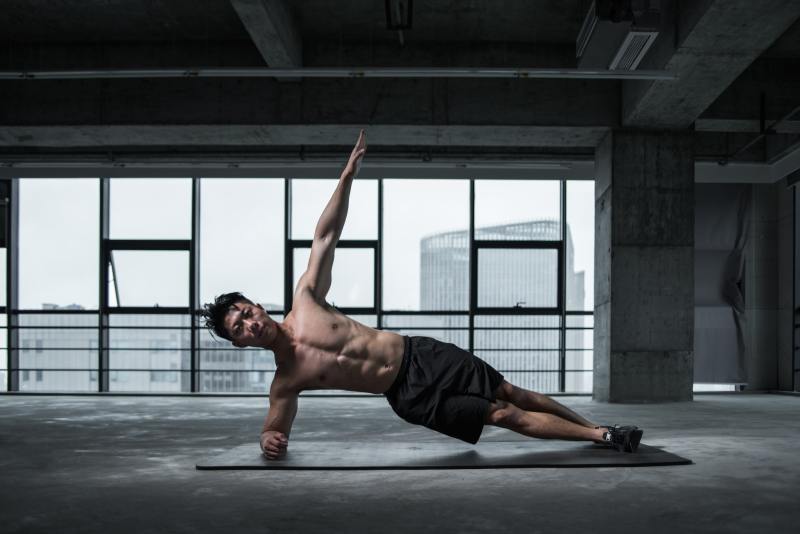
Yoga lovers often talk about the many benefits it can produce, including alleviating stress and anxiety and supporting improved sleep. While there are hundreds of reasons to incorporate yoga into your life, one major benefit is often overlooked — building core strength. Practicing any type of yoga can help strengthen your core, however, certain poses may target the core more than others and be considered core exercises.
If you’re looking to build a stronger core, incorporating these yoga poses into your routine might be worth a try. Below, this guide will explore the importance of core workouts and dive into the easiest yoga poses for a killer core workout. Even better, you can do these four yoga poses anywhere and they require no equipment.

Understanding the “core”
It is a common misconception in the fitness industry that having a strong core simply means having six-pack ab muscles. However, your body’s core is more than just your abdominal muscles. The core also includes muscles in your lower back, pelvis, and hips, which all work synergistically to support your spine. As such, one of the benefits of yoga is strengthening these muscles in order to reduce back pain, improve posture, and enhance balance.

Why core strength matters
All the muscles involved in the core play a critical role in supporting every moment we make, including walking, standing, and sitting. Core strength is often not something we think about on a regular basis, yet it is extremely important. Some benefits of enhanced core strength include:
- Better posture by realigning hips to allow you to stand upright, tall, and straight — improved posture can help reduce the risk of several chronic back and neck conditions that can cause long-term pain
- Improved balance
- Reduces the risk of injury
- Reduces back pain by strengthening the muscles that support the spine
- Improved spinal mobility and flexibility
- Improved digestion
- Enhanced athletic performance

4 yoga core workouts
1. Plank pose
Many yoga poses stem from a classic plank, so this pose is a great one to master for beginners. Not only is the plank ultra effective as a core workout, but it’s modifiable based on each person’s physical abilities. To perform a plank, begin on your hands and knees and slowly begin to lift your hips while maintaining straight legs. As you do this, engage the muscles of your core and keep your core up. Aim to maintain a neutral, straight-line position and perform a hold for as long as possible.
Mastering the plank can take time and will become easier as you strengthen your core muscles. For beginners, this pose can be performed on the knees for extra support. The plank pose targets the transversus abdominals, rectus abdominals, and internal oblique muscles.
2. Downward dog-facing pose
The downward dog yoga pose is great for working the external oblique muscles and strengthening core muscles. To do this pose, start on your hands and knees and bring your hands in front of your shoulders. Spread your fingers wide and apart, exhaling as the knees are elevated off the mat. As you extend, keep your core muscles engaged and held tight. During the downward dog, you can keep your legs straight or slightly bent and the spine should remain straight.
If you have tight hamstring muscles, you may find the downward dog pose to be tricky. Beginning your workout with some hamstring stretch exercises might help you to master this yoga pose.
3. Side plank pose
A side plank pose is a variation of the standard plank pose (listed in #1). However, the side plank will focus more on working the oblique muscles of your core instead of the front abdominal muscles. To perform a slide plank, place your right hand on the floor and move your left arm up into the air. Hold a plank position on the side while keeping a neutral position and keep your hips elevated off of the yoga mat. Hold for as long as possible, focusing on breathing and engaging your core throughout the workout.
To really blast your core muscles, you can also work up to a side plank with a twist, which engages the oblique muscles even more.
4. Boat pose
The boat pose is a stationary posture yoga pose that offers great benefits for your core. To do the boat pose, start by sitting on the floor on a yoga mat, with your legs directly out in front of you. Then, sit up tall and lengthen your spine while slowly leaning back and bending your knees. The idea of this pose is to keep leaning back until your feet are elevated off the ground. Your arms and legs should be extended in a “V” formation.
If you’re a beginner to core strengthening exercises, you might want to work your way up to this one. This moderate-to-advanced yoga pose requires the strength of your hip flexors and requires flexibility, especially in the hamstring muscles. The boat pose is great to add to core workouts, as abdominal muscles are engaged in the exhale portion of this pose.

Strengthening your core with yoga
Maintaining a strong core is especially important as we age — helping support posture, reducing the risk of injury, and improving balance and stability. Give these four core strengthening exercises a shot to help target your core muscles and improve your health.



